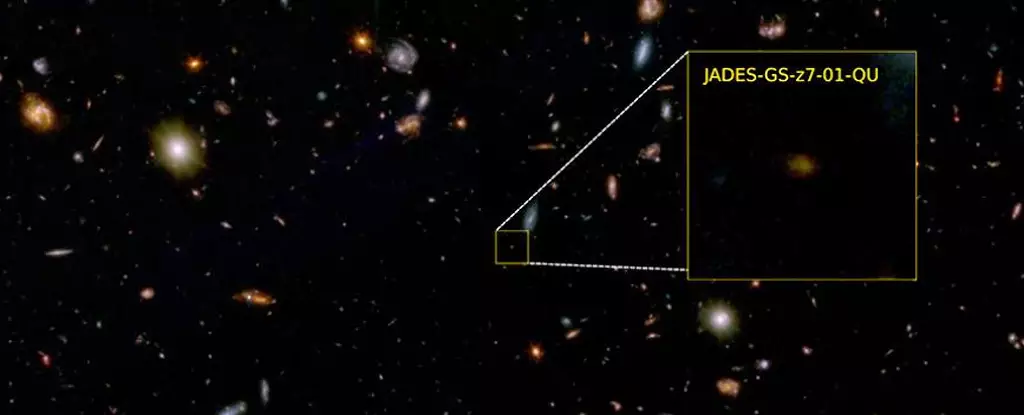The early phases of the Universe were marked by tremendous activity, with gas clouds collapsing to give birth to new stars. However, amidst this star-forming frenzy, there exists a galaxy that defied the norm by being quenched when the Universe was only 700 million years old. This galaxy, JADES-GS-z7-01-QU, exhibited very little evidence of ongoing star formation when observed using the JWST (James Webb Space Telescope). Scientists are puzzled by this unusual phenomenon and seek to uncover the reasons behind its premature stagnation.
Star formation is a process expected to occur gradually over time, rather than coming to an abrupt halt. The sudden cessation of star formation in this young galaxy poses a significant challenge to astronomers. The galaxy initially experienced a burst of star formation activity, only to abruptly stop after a period of intense activity lasting between 30 to 90 million years. Researchers speculate that various factors could have contributed to this swift end, including the depletion of gas, the influence of a supermassive black hole, or the rapid exhaustion of available star-forming material.
The current JWST data offers limited insights into the demise of this early galaxy, prompting astronomers to delve deeper into the data to unravel the mystery. The rapid transition from a star-forming phase to a dormant state challenges existing models based on observations from the modern Universe. This necessitates further observations using JWST to identify similar galaxies in the early Universe, shedding light on the mechanisms driving the cessation of star formation in these ancient celestial bodies.
A Glimmer of Hope
While JADES-GS-z7-01-QU appeared dormant during the JWST observation, there remains a possibility that the quenching of star formation was temporary. It is plausible that the periodic outflows of star-forming material to interstellar space, possibly driven by the central black hole, led to this transient quiescent state. This opens up the intriguing prospect that other “quenched” galaxies may have experienced temporary dormancy before being revitalized by significant infusions of gas, potentially through collisions with other galaxies.
The quest to unravel the mysteries of galaxies in the early Universe continues, with future JWST observations expected to yield more insights into the phenomenon of star-birth quenching. By studying a broader range of galaxies and their quenched phases, astronomers aim to piece together the intricate puzzle of cosmic evolution. The discovery of more galaxies like JADES-GS-z7-01-QU offers a promising avenue for exploring the dynamic processes shaping the early Universe and the enigmatic transitions experienced by celestial bodies in their cosmic journey.



Leave a Reply